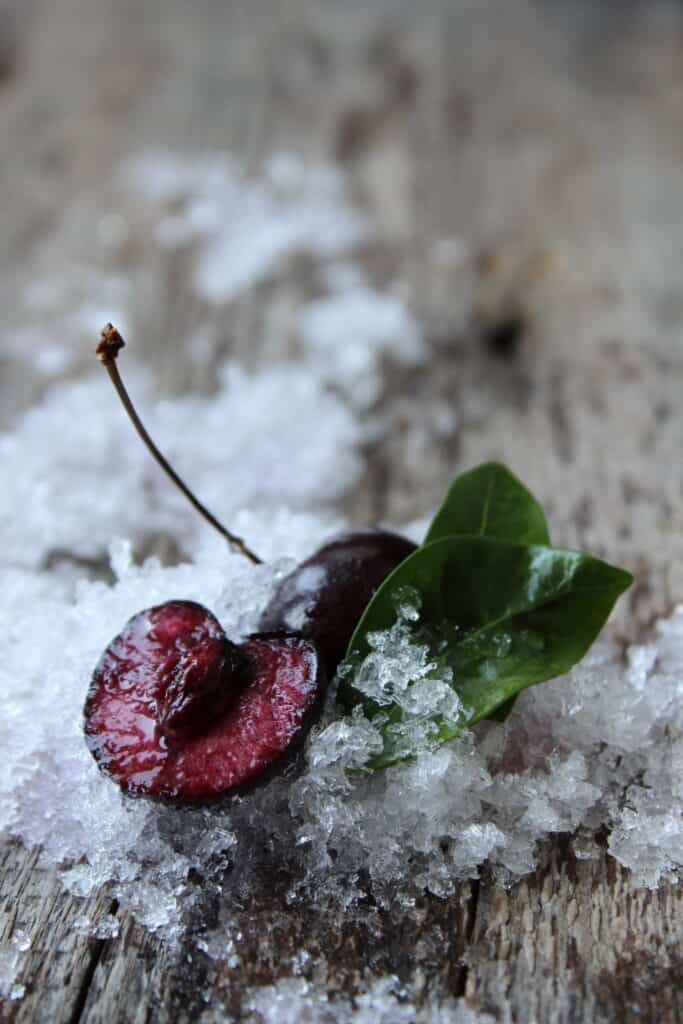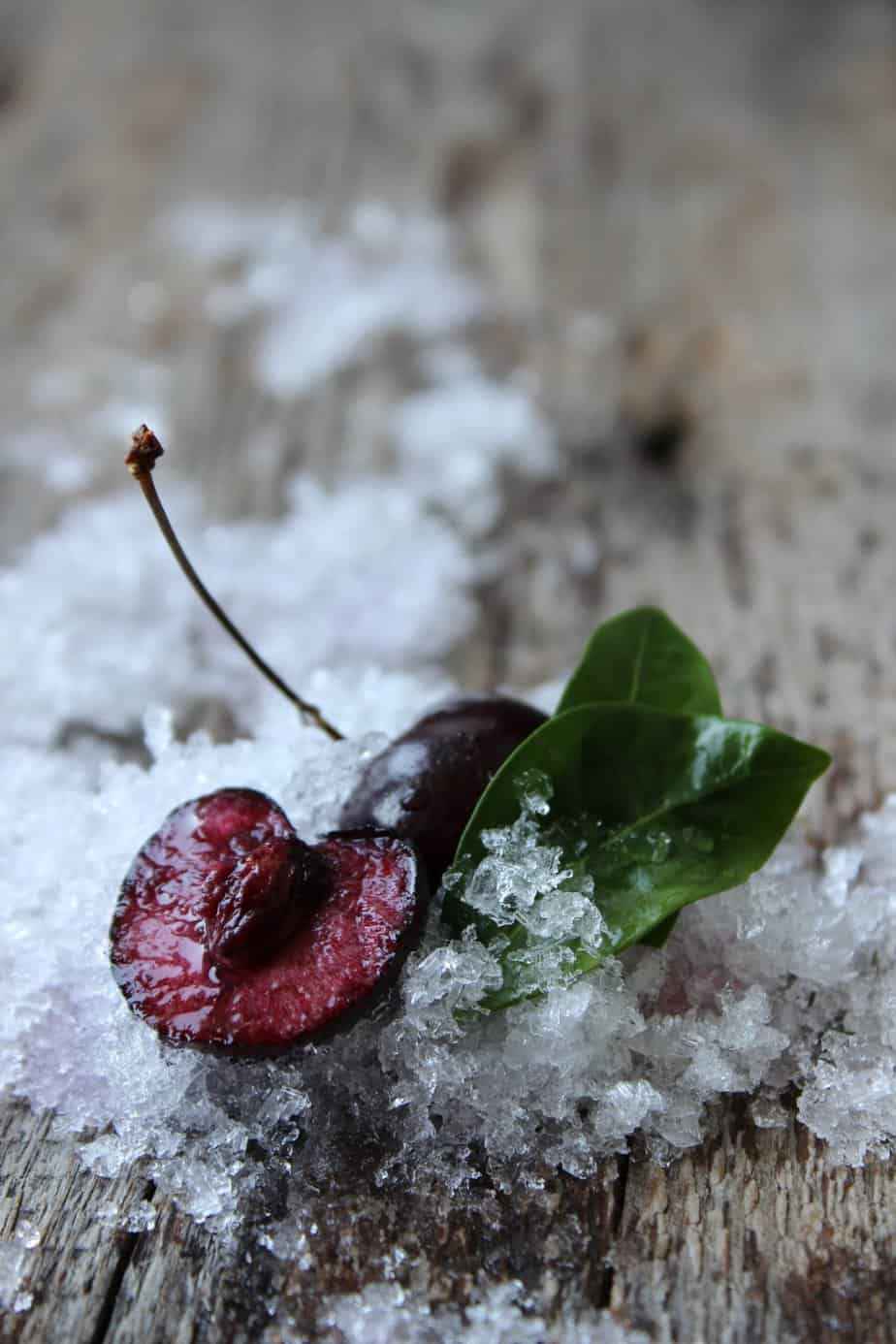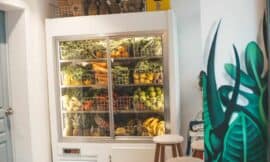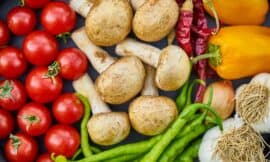Defrosting frozen foods might seem like a simple task, but doing it safely and effectively is crucial for maintaining both the quality and safety of your meals. Understanding the best ways to thaw your frozen foods is a kitchen skill that cannot be overlooked.
There are five ways to defrost or thaw food: By placing the frozen food in the refrigerator, defrosting via cold water, defrosting in the microwave, defrosting frozen foods at room temperature, defrosting food under running water.
From the quiet patience required for refrigerator thawing to the quick convenience of microwave defrosting, each method has its own set of advantages and considerations. But why is it so important to defrost correctly? It’s not just about preserving the taste and texture of your food – it’s also about ensuring food safety. Improper thawing can lead to the growth of harmful bacteria, potentially turning your delightful dinner into a health hazard.

In this article, we’ll delve into various defrosting techniques, each suited to different types of frozen foods, from meats and vegetables to baked goods and prepared meals. You’ll learn the ideal thawing times for various foods, ensuring that your meal prep is as efficient as it is safe. So, whether you’re planning a gourmet meal or simply prepping for the week ahead, read on to master the best ways to defrost frozen foods and ensure that every dish you prepare is both delicious and safe.
Safe and Effective Methods for Thawing Frozen Foods
Below are Safe and Effective Methods for Thawing and handling frozen foods:
| Method | Description | Pros | Cons |
|---|---|---|---|
| In the Refrigerator | Safest way, keeps food at a safe temperature, but takes a long time. | Hands-off, prevents bacteria growth. | Requires planning ahead, a pound of meat can take a day. |
| In Cold Water | Sealed packages thawed in cold water, changing water every 30 minutes. | Effective for quick thawing. | Requires frequent water changes. |
| In the Microwave | Uneven thawing, best for food to be cooked immediately after. | Fastest method for small items. | May lead to poor quality or bacterial growth. |
| At Room Temperature | Suitable for pastries, breads, and fruits for 2-4 hours, not for meat, fish, and vegetables. | Good for certain baked goods and fruits. | Not safe for meat, fish, and vegetables. |
| Under Running Water | Meat thawed under cool running water. | Quick method for meat. | Least preferred method, risk of bacteria growth. |
Refrigerator Thawing
Defrosting in the refrigerator is often considered the safest and most reliable method for thawing frozen foods. This method ensures that foods are thawed at a safe temperature, minimizing the risk of bacterial growth. It’s a gentle process that can maintain the quality and nutritional value of your food, but it requires foresight and patience. Let’s explore the benefits of this method and the time required for different types of food to thaw in the refrigerator.
Advantages of Refrigerator Thawing
Refrigerator thawing is praised for its ability to defrost foods evenly and safely. By keeping foods at a constant, low temperature (usually below 40°F or 4°C), this method prevents the growth of bacteria that can occur at room temperature. It’s ideal for preserving the texture and flavor of foods, especially delicate items like fish and poultry. Additionally, foods thawed in the refrigerator can be refrozen without cooking, although there may be some loss of quality.
The second advantage of refrigerator thawing lies in its versatility. Almost all types of frozen foods, from large cuts of meat to smaller items like frozen peas, can be safely thawed using this method. It’s particularly useful for planning ahead, as you can transfer items from the freezer to the refrigerator a day or two before you need them, ensuring they’re ready to cook when you are.
Time Required for Different Food Types
The time it takes to defrost food in the refrigerator varies based on the size and type of the item. Here’s a quick reference guide to help you plan:
- Small items (like individual chicken breasts or fish fillets): 24 hours
- Medium-sized items (like a pound of ground meat or a pack of chicken thighs): 48 hours
- Large items (like a whole chicken or a large roast): Up to 72 hours or more
For best results, place the item in a dish or on a tray to catch any drips as it thaws. This not only keeps your refrigerator clean but also prevents cross-contamination with other foods.
Remember, though the refrigerator method is slower than other methods, it’s the best way to ensure that your food remains safe to eat and retains its quality. Always plan ahead when using this method and allow sufficient time for your food to thaw completely.
Cold Water Thawing
When you need to defrost frozen food more quickly than the refrigerator allows, but still want to do it safely, cold water thawing is an excellent option. This method is faster than refrigerator thawing and is particularly useful for smaller items that don’t require an extended period to defrost. It involves submerging the frozen food in cold water, making it a practical choice for many everyday cooking needs. Let’s dive into the steps for cold water thawing and the safety tips you should keep in mind.
Heres an article on quickly defrosting food.
Steps for Cold Water Thawing
To begin cold water thawing, first, ensure that your food is in a leak-proof package or plastic bag. This is crucial to prevent water from entering the package and to avoid any potential contamination. Submerge the package in cold tap water, changing the water every 30 minutes to continue the thawing process. The constant flow of cold water not only speeds up thawing but also keeps the food at a safe temperature.
The time it takes to thaw food using this method depends on its size. For example, a pound of meat or poultry might take an hour or less to thaw, while a larger item like a whole chicken or a large roast could take two to three hours or more. Always check the food to ensure it’s completely thawed before cooking. If you’re in a hurry, this method can be a real time-saver, but remember to change the water regularly to maintain safety.
Safety Tips and Precautions
While cold water thawing is quicker than refrigerator thawing, it’s essential to follow safety guidelines to prevent bacterial growth. The most important rule is to never use warm or hot water for thawing, as this can cause the outer layer of the food to reach a temperature where bacteria can thrive. Keep the water cold and change it every 30 minutes.
Once the food is thawed, it should be cooked immediately. Unlike refrigerator thawing, you shouldn’t refreeze food that’s been thawed using the cold water method unless it has been cooked first. This helps to ensure food safety and quality. Remember, this method is ideal for last-minute meal preparations, but it requires your attention to maintain the cold water and to monitor the thawing process.
Microwave Thawing
Microwave thawing stands out as the quickest method for defrosting frozen foods, making it ideal for those times when you need to prepare a meal in a hurry. Most modern microwaves come with a defrost setting that thaws food quickly and evenly, although it requires some attention to ensure the food doesn’t start cooking during the process. This section will guide you through the proper way to defrost food in a microwave and the do’s and don’ts to ensure optimal results and safety.
How to Defrost in a Microwave
To defrost food in a microwave, first remove any packaging that is not microwave-safe. Place the food in a microwave-safe dish to catch any juices that may leak out. Use your microwave’s defrost setting or set it to cook at 20-30% of its full power. Defrosting times vary depending on the wattage of your microwave and the size of the food item. As a general guideline, plan on approximately 7-8 minutes per pound for most foods.
It’s important to turn or stir the food periodically during defrosting to ensure even thawing. For larger items like a whole chicken or roast, pause the microwave every few minutes to check the progress and rearrange the food if necessary. Be mindful that some parts of the food may start to cook during this process, so it’s crucial to monitor the thawing closely and adjust the time as needed.
Do’s and Don’ts of Microwave Thawing
Do: Use the defrost function or lower power settings to avoid cooking the food while thawing. Check and rearrange the food regularly for even defrosting. Cook the food immediately after thawing, as some areas might be warm and could start to breed bacteria.
Don’t: Don’t use high power settings as it can cook the food on the outside while the inside remains frozen. Avoid letting the food sit at room temperature after microwave thawing, as this can lead to bacterial growth. Don’t refreeze foods that have been defrosted in the microwave unless they have been cooked first.
Microwave thawing is a convenient and quick method for defrosting, but it requires attention and care to ensure food safety and quality. By following these guidelines, you can effectively use your microwave to thaw food in situations where time is of the essence.
How to Defrost Bread and How to Defrost Chicken Quickly and how to defrost vegetables? Microwave thawing is the way to go.
When and How to Cook Without Thawing
Cooking without thawing is particularly suitable for smaller items like frozen vegetables, burgers, or even individual chicken breasts. These can go straight from the freezer to the oven, grill, or stovetop. For oven-baking, preheat your oven to a slightly higher temperature than you would for thawed food. This helps to compensate for the lower starting temperature of the frozen food.
For items like frozen burgers or chicken breasts, using a skillet or grill is effective. Start on a lower heat setting to allow the inside of the food to start thawing while the outside begins to cook, then increase the heat to finish cooking. This method ensures that your food cooks evenly and reaches the proper internal temperature for safety. Always use a food thermometer to check that your meal has reached the recommended temperature.
Adjustments in Cooking Time and Temperature
When cooking frozen foods directly, expect approximately 50% longer cooking time than if the food were thawed. For instance, if a chicken breast typically takes 20 minutes to cook when thawed, plan for about 30 minutes when cooking from frozen. The key is to monitor the food closely, especially towards the end of the cooking time, to prevent overcooking or drying out.
Adjusting the temperature is also crucial. For baked goods, set the oven 25-30 degrees higher than the recipe suggests for thawed goods. However, for stovetop cooking, start at a lower temperature to avoid burning the outside while the inside is still frozen. Gradually increasing the heat allows the food to cook thoroughly and evenly. Remember, safety is paramount, so always ensure your food reaches the safe internal temperature before serving.
Also, there are a number of frozen food recipes and how frozen foods are manufactured. Here is an extensive guide on frozen food manufacturing process.
Health and Safety Considerations
In the process of defrosting frozen foods, health and safety are of utmost importance. The thawing phase is critical as it can lead to the proliferation of bacteria if not done correctly. This section provides essential guidelines and considerations to ensure food safety during defrosting. Understanding these principles helps in reducing the risk of foodborne illnesses and ensures that the food retains its quality and nutritional value.
Understanding Bacteria and Food Safety
Bacteria are microorganisms that can cause foodborne illnesses. While freezing food halts bacterial growth, it doesn’t kill bacteria. As food thaws, bacteria can become active again. The key is to avoid letting food enter the “Temperature Danger Zone” between 41°F and 135°F (5°C and 57°C), where bacteria can multiply rapidly. Safe thawing practices are crucial to keep food outside this temperature range for as long as possible.
When defrosting, it’s important to ensure that the temperature of the food remains consistent and safe. Refrigerator thawing is effective as it keeps food at a steady, low temperature. In contrast, microwave and cold water thawing require immediate cooking of the food after thawing to minimize the time it spends at unsafe temperatures. Always monitor the thawing process, regardless of the method used, to prevent any part of the food from entering the danger zone.
In addition to these methods, maintaining cleanliness in the kitchen is crucial. Wash hands, utensils, and surfaces thoroughly after handling defrosted food. This prevents cross-contamination between raw and cooked foods. Remember, food safety starts with proper thawing and handling practices to ensure that your meals are safe and enjoyable.
Best Practices for Handling Defrosted Food
Following best practices in handling defrosted food is vital for maintaining food safety:
- Refrigerator Thawing:
- Place the food in a leak-proof container or bag, and thaw it in the refrigerator.
- Use the thawed food within 1-2 days to minimize the risk of bacterial growth.
- Cold Water Thawing:
- Submerge food in a leak-proof bag in cold water, changing the water every 30 minutes.
- Cook the food immediately after thawing to avoid bacterial growth.
- Microwave Thawing:
- Use the defrost setting and turn or stir the food periodically for even thawing.
- Cook the food immediately after thawing to ensure safety.
Conclusion on Best Ways to Defrost Frozen Foods:
In conclusion, mastering the art of defrosting frozen foods is a valuable skill that enhances both the safety and quality of your meals. From the slow and steady refrigerator thawing method, which ensures even and safe defrosting, to the quick and convenient microwave thawing for those last-minute meal preparations, each method has its unique benefits. Cold water thawing offers a middle ground, balancing speed and safety. And for those times when you’re in a rush, remember that certain foods can be cooked directly from frozen, saving you time without compromising on taste or safety.
Remember, the key to successful defrosting lies in understanding the principles of food safety. Avoiding the temperature danger zone and following best practices for handling defrosted food are crucial steps in preventing foodborne illnesses.
We encourage you to apply these methods in your kitchen and experience the difference in the quality and safety of your meals. Defrosting the right way not only preserves the integrity of your food but also gives you peace of mind.
Heres an article on best ways to defrost frozen foods and how to defrost fish.





